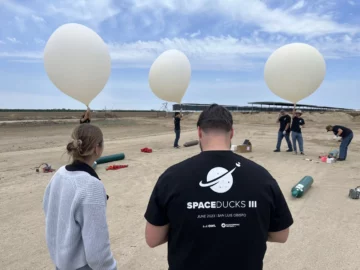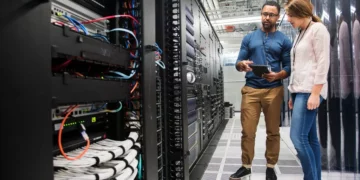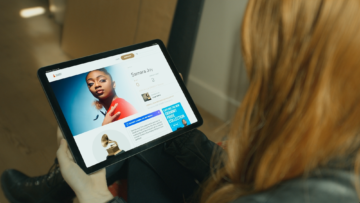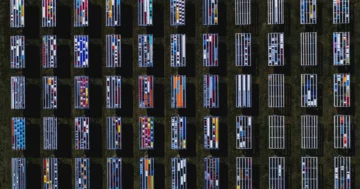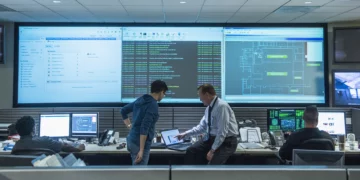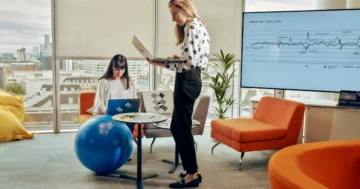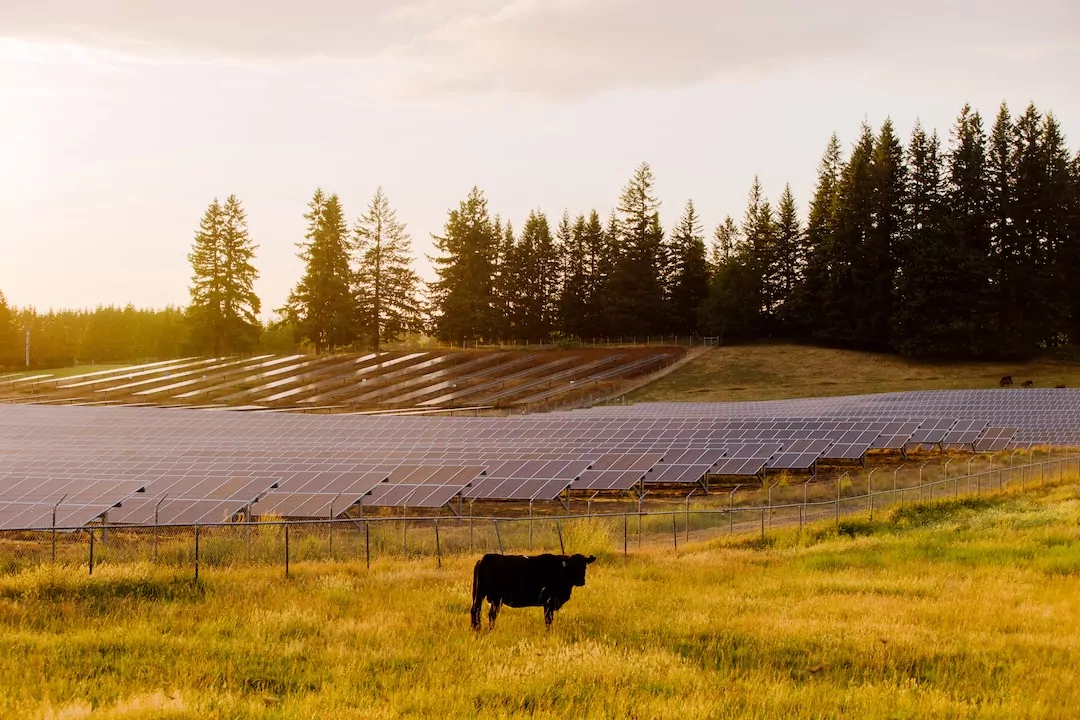
Renewable energy, also known as clean energy, is produced from natural resources that are generated and replenished faster than they are consumed—such as the sun, water and wind. Most renewable energy sources produce zero carbon emissions and minimal air pollutants. Fossil fuels (oil, coal and natural gas) on the other hand, are finite resources and release harmful greenhouse gas emissions (GHGs), including carbon dioxide (CO2) and methane, when burned. They are widely considered to be the main causes of climate change and specifically, global warming.
Understanding the types of renewable energy sources available can be a key step towards reducing your carbon footprint and for organizations, reducing the environmental impacts of your operations and supply chain.
Solar power
Solar energy has evolved to be efficient, versatile and resilient. Currently, there are two main ways to generate solar power: photovoltaics (PV), which is used for smaller scale applications, and concentrating solar-thermal power (CSP), which is used mainly for utility and industry-scale applications.
Solar PV installations, which include solar panels, have a unique set of challenges including cloud movement, weather, tree location and more. To help overcome these challenges, technological advances are making solar cells more flexible, lighter, easier to install, less expensive to produce and more powerful by requiring less space to collect the same amount (or more) of light.
Today, solar power is used across industries for a variety of applications. Individual homes and businesses might install rooftop solar panels to generate on-site electricity. On a larger scale, solar farms can be installed on vacant land for industrial applications, helping to reduce energy spending. Data centers, hospitals, government facilities and more use solar power to supplement energy needs.
Wind power
The modern wind turbine was built in 1940 and the technology has evolved steadily and significantly since. Today’s wind turbines vary from small (single home or business) to utility-scale (offshore wind farms). Wind energy is a cost-effective way to incorporate clean, sustainable energy into the power supply. And when it comes to wildlife impacts, wind power projects rank lower than any other energy source.
Although used for general electricity generation, localized wind power is still also used to mill grain and pump water. Wind power can also provide energy for electric vehicle charging stations.
In September 2022, the White House announced an initiative to expand U.S. offshore wind energy production by 2035 using large-scale floating turbines that can be placed in deeper water. This has the potential to more than double production capacity.
Hydropower
Water is the largest source of renewable energy. Hydroelectric power relies on the movement of water and is the greatest contributor of renewable electricity across the globe. It uses marine and tidal energy, the flow of rivers and streams, reservoirs and dams to move turbines that generate electricity.
Beyond electricity generation, many industries leverage hydropower for operations. For example, mining uses water in remote locations to aid in extractions and textile and chemical manufacturers may use on-site hydropower systems to power processes such as washing, fabrication, sanitation and more.
Tidal power in particular has yet untapped potential. Several tidal power technologies are currently being researched and developed including:
- Tidal barrage: Dams with turbines are placed at the entrance to bays or estuaries so that when water is released through it generates power.
- Tidal current: Turbines anchored to buoys or the ocean floor take advantage of ocean current movement.
- Wave energy: Wave movement and pressure are used to generate power—ocean areas with strong wind currents work best.
While water is an abundant natural resource, it can be sensitive to environmental changes. For example, diminishing winds can affect the number and power of waves and drought conditions can reduce the amount of water in reservoirs, streams and rivers.
Geothermal
Geothermal energy systems convert heat from within the Earth (in the form of hot steam and hydrocarbon vapor) into electricity. The electricity generated from geothermal energy is used across industries. For example, it provides heat for agricultural greenhouses as well as heating and cooling for manufacturing and food processing. Geothermal energy is also used to heat and cool commercial buildings including hospitals, schools and more. Geothermal heat pumps (GHPs) are used for smaller scale applications, such as powering homes.
Both large geothermal power plants and smaller-scale GHPs require a relatively small footprint compared to other renewable energy sources. Additionally, the inexhaustible heat flow of the Earth’s interior provides a continuously replenishable source of fuel.
Biomass energy
Biomass uses organic materials and byproducts to provide direct heat, generate electric power and create biofuels including biodiesel and ethanol. Biofuels can be used in industrial boilers to generate steam that powers processes. They also have the potential to replace fossil fuels in the transportation sector.
Bioenergy offers more consistent total energy generation than solar and wind energy, but it does cause low-level greenhouse gases. These gases combined with additional environmental effects including landfill-use effects, cast doubt on how sustainable biomass energy really is.
What about nuclear power?
Nuclear power requires the rare and non-renewable mineral uranium but is still considered a low carbon emission source of energy. The next generation of nuclear power plants and generators are smaller, more versatile and energy efficient. Advanced small modular reactors (SMRs) can vary in size based on need and have a variety of applications including power generation, desalination, heating and more.
Together, nuclear power and hydropower provide three quarters of the world’s low-carbon energy, but due to safety concerns and operating costs, nuclear power generation is being reduced in advanced economies. With minimal new investment being made, nuclear power generation may be reduced by two-thirds by the year 2040.
Understanding the power grid
Understanding where and how power is generated can help you determine the most effective renewable energy strategy. Many power grids use a combination of renewable power and fossil fuels to provide a stable electric supply. Microgrids—small, independent networks—connect into the main grid and use renewable power and alternative energy sources to balance load requirements. Since microgrids offer local supply with greater grid stability and resiliency, they help reduce the likelihood of energy supply disruptions.
There are many renewable energy source options available, so people and organizations can choose the best option to meet their sustainability goals. Whether with a dedicated, on-site renewable energy system, a grid that utilizes a mix of energy sources or a hybrid approach that uses a combination of both, the choice can be based on convenience, cost-effectiveness or other factors.
At IBM, 64% of the company’s energy consumption across global operations comes from renewable sources. Of that, 49% is sourced directly from renewable power suppliers and 15% directly from the grid. You can read more about IBM’s impact here.
Renewable energy meets emerging technology
Technologies including artificial intelligence (AI) and data analytics are key to enhancing the benefits of renewable energy. They can help streamline and automate energy technologies, like creating create customized models to promote energy supply optimization.
For example, data provides immense value to energy and utility companies. Insights regarding the performance and health of operational assets, including digital ones, along with maintenance, repair and replacement schedules is crucial to keeping the power on. Integrating AI can further optimize energy and utilities operations with new insights that delve into the root causes of problems as well as building a predictive maintenance framework. Read how Bruce Power is managing their future now with a dynamic enterprise asset management (EAM) platform built using the IBM® Maximo® Application Suite.
Join forces with like-minded peers to help accelerate your own renewable energy and environmental goals.
Subscribe to the IBM Sustainability newsletter
Was this article helpful?
YesNo
More from Sustainability

January 26, 2024
How Indigenous perspectives can guide climate innovation for a just transition: IBM teams up with Net Zero Atlantic in Canada
4 min read – The windswept province of Nova Scotia lies on Canada’s Atlantic coast, and comprises part of Mi’kma’ki, the traditional districts of the Mi’kmaq First Nations people. In recent years, Nova Scotia has become a promising site for the clean energy transition, with some of the world’s fastest offshore wind speeds and potential for hydrogen development. But too often, conversations about the impact of energy development in the region do not include Indigenous perspectives or are inaccessible to people outside of the…

January 16, 2024
The advantages of holistic facilities management
2 min read – Beyond the traditional challenges of today’s markets, many organizations must also address the challenges of real estate and facilities management. These issues include managing rising real estate costs, increasing lease rates, new sustainability goals and under-utilized hybrid work environments. Successfully managing your facilities can directly impact employee productivity and customer satisfaction. Facilities management plays a role in the ongoing cost of the operation of your facility, its lifespan and its energy consumption, as well as how you optimize the…

December 18, 2023
Examples and uses of GIS
4 min read – One of the largest sources of data is all around us—that is, geospatial data. This is information relating to the Earth’s surface, its climate, the people who live on it, its ecosystems and more. Geographic information systems (GIS) visualize and make sense of this data, helping people and businesses better understand the patterns and relationships of our world. GIS perform spatial analysis of geospatial datasets—consisting of vector data (points, lines and polygons) and raster data (cells with spatial information)—to produce…

December 15, 2023
Examples of sustainability in business
4 min read – Some of the first teachings about improving the planet seem simple: reduce, reuse, recycle. People have since made lifestyle choices and adjustments, such as biking to work and segregating garbage, to bring this rule to life and help save the environment. Now, climate change is affecting businesses as much as individuals. According to the United Nations Environment Programme (UNEP), both consumers and investors are being turned-off by companies that ignore their environmental impact. Sustainable business practices are an essential part…
IBM Newsletters
Get our newsletters and topic updates that deliver the latest thought leadership and insights on emerging trends.
Subscribe now More newsletters
- SEO Powered Content & PR Distribution. Get Amplified Today.
- PlatoData.Network Vertical Generative Ai. Empower Yourself. Access Here.
- PlatoAiStream. Web3 Intelligence. Knowledge Amplified. Access Here.
- PlatoESG. Carbon, CleanTech, Energy, Environment, Solar, Waste Management. Access Here.
- PlatoHealth. Biotech and Clinical Trials Intelligence. Access Here.
- Source: https://www.ibm.com/blog/renewable-energy-types/
- :has
- :is
- :not
- :where
- $UP
- 1
- 15%
- 16
- 2022
- 2023
- 2024
- 26
- 30
- 300
- 40
- 400
- 41
- 46
- 7
- 9
- a
- About
- abundant
- accelerate
- According
- across
- Additional
- Additionally
- address
- adjustments
- advanced
- advances
- ADvantage
- advantages
- Advertising
- affect
- affecting
- Agricultural
- AI
- Aid
- AIR
- All
- along
- also
- alternative
- amount
- amp
- an
- analysis
- analytics
- anchored
- and
- any
- Application
- applications
- approach
- ARE
- areas
- around
- article
- AS
- asset
- asset management
- Assets
- At
- author
- automate
- available
- back
- Balance
- based
- BE
- become
- being
- benefits
- BEST
- Better
- biomass
- Blog
- Blue
- both
- bring
- Bruce
- Building
- buildings
- built
- burned
- business
- business practices
- businesses
- but
- button
- by
- CAN
- Canada
- Capacity
- carbon
- carbon dioxide
- carbon emissions
- carbon footprint
- card
- Cards
- cars
- CAT
- Category
- Cause
- causes
- Cells
- Centers
- chain
- challenges
- change
- Changes
- charging
- charging stations
- check
- chemical
- choice
- choices
- Choose
- circles
- cityscape
- class
- clean
- clean energy
- Climate
- Climate change
- Cloud
- co2
- Coal
- Coast
- collect
- color
- combination
- combined
- comes
- commercial
- Companies
- Company’s
- compared
- comprises
- Concerns
- conditions
- considered
- consistent
- Consumers
- consumption
- Container
- continue
- continuously
- contributor
- convenience
- conversations
- convert
- Cool
- Cost
- cost-effective
- Costs
- create
- Creating
- crucial
- CSP
- CSS
- Current
- Currently
- custom
- customer
- Customer satisfaction
- customized
- data
- Data Analytics
- data centers
- Date
- December
- dedicated
- deeper
- Default
- definitions
- deliver
- delve
- description
- Determine
- developed
- Development
- different
- digital
- diminishing
- direct
- directly
- disruptions
- do
- does
- double
- doubt
- Drought
- due
- dynamic
- earth
- Earth’s interior
- easier
- economies
- Ecosystems
- Effective
- effects
- efficient
- Electric
- electric vehicle
- electricity
- emerging
- emission
- Emissions
- Employee
- energy
- Energy Consumption
- enhancing
- Enter
- Enterprise
- entrance
- Environment
- environmental
- environments
- essential
- estate
- Ether (ETH)
- evolved
- example
- examples
- Exit
- Expand
- expensive
- facilities
- Facility
- factors
- false
- Farms
- faster
- fastest
- field
- First
- floating
- Floor
- flow
- follow
- fonts
- food
- Footprint
- For
- Forces
- form
- fossil
- fossil fuels
- Framework
- from
- Fuel
- fuels
- further
- future
- GAS
- General
- generate
- generated
- generates
- generation
- generator
- generators
- geographic
- geothermal energy
- get
- Global
- global warming
- globe
- Goals
- Government
- greater
- greatest
- Grid
- guide
- hand
- harmful
- Have
- Heading
- Health
- height
- help
- helpful
- helping
- High
- holistic
- Home
- Homes
- hospitals
- HOT
- House
- How
- HTTPS
- Hybrid
- Hybrid Work
- hydrogen
- Hydropower
- IBM
- ICO
- ICON
- IEA
- ignore
- image
- immense
- Impact
- Impacts
- improving
- in
- inaccessible
- include
- Including
- including digital
- incorporate
- increasing
- independent
- index
- individual
- individuals
- industrial
- industries
- information
- Information Systems
- Initiative
- Innovation
- insights
- install
- installed
- Integrating
- Intelligence
- interior
- into
- investment
- Investors
- issues
- IT
- ITS
- January
- jpg
- just
- keeping
- Key
- known
- Land
- large
- large-scale
- larger
- largest
- latest
- Leadership
- less
- Leverage
- lies
- Life
- lifespan
- lifestyle
- light
- lighter
- like
- like-minded
- likelihood
- lines
- live
- load
- local
- locale
- location
- locations
- Low
- low-carbon
- lower
- made
- Main
- mainly
- maintenance
- make
- Making
- management
- managing
- Manufacturers
- manufacturing
- many
- Marine
- Markets
- materials
- max-width
- May..
- Meet
- Meets
- methane
- microgrids
- might
- min
- mineral
- minimal
- Mining
- minutes
- mix
- Mobile
- models
- Modern
- modular
- more
- most
- move
- movement
- much
- must
- Nations
- Natural
- Natural Gas
- Navigation
- Need
- needs
- net
- New
- new investment
- Newsletters
- next
- nothing
- now
- nuclear
- Nuclear power
- number
- ocean
- Ocean Floor
- of
- off
- offer
- Offers
- Office
- often
- Oil
- on
- ones
- ongoing
- operating
- operation
- operational
- Operations
- optimization
- Optimize
- optimized
- Option
- Options
- or
- organic
- organizations
- Other
- our
- outside
- Overcome
- own
- page
- panels
- part
- particular
- patterns
- peers
- People
- perform
- performance
- perspectives
- PHP
- placed
- planet
- plants
- platform
- plato
- Plato Data Intelligence
- PlatoData
- plays
- plugin
- points
- policy
- position
- Post
- potential
- power
- power plants
- Power Supply
- powerful
- Powering
- powers
- practices
- predictive
- pressure
- primary
- problems
- processes
- processing
- produce
- Produced
- Production
- productivity
- programme
- projects
- promising
- promote
- provide
- provides
- pump
- pumps
- rank
- RARE
- Rates
- Read
- Reading
- real
- real estate
- really
- recent
- reduce
- Reduced
- reducing
- regarding
- region
- Relationships
- relatively
- release
- released
- remote
- Renewable
- renewable energy
- repair
- replace
- replacement
- representing
- require
- Requirements
- requires
- researched
- resilient
- resource
- Resources
- responsive
- reuse
- right
- rising
- rivers
- robots
- Role
- root
- Rule
- s
- Safety
- same
- satisfaction
- Save
- Scale
- Schools
- Screen
- scripts
- sector
- seem
- sense
- sensitive
- seo
- September
- set
- several
- significantly
- Simple
- since
- single
- site
- Sitting
- Size
- small
- smaller
- So
- solar
- solar panels
- Solar Power
- some
- Source
- sourced
- Sources
- Space
- Spatial
- specifically
- speeds
- Spending
- Sponsored
- squares
- Stability
- stable
- start
- Stations
- steadily
- Steam
- Step
- Still
- Strategy
- streamline
- streams
- strong
- subscribe
- Successfully
- such
- Sun
- supplement
- suppliers
- supply
- supply chain
- Surface
- Sustainability
- sustainable
- Sustainable Energy
- SVG
- system
- Systems
- Tablet
- Take
- talking
- teams
- technological
- Technologies
- Technology
- tertiary
- than
- thanks
- that
- The
- their
- theme
- There.
- These
- they
- this
- thought
- thought leadership
- three
- Through
- time
- Title
- to
- today’s
- too
- top
- topic
- Total
- towards
- traditional
- transition
- transportation
- tree
- Trends
- turbine
- two
- two-thirds
- type
- types
- u.s.
- understand
- understanding
- unique
- United
- united nations
- untapped
- Updates
- URL
- use
- used
- uses
- using
- utilities
- utility
- utilizes
- value
- variety
- vary
- vehicle
- versatile
- View
- visualize
- visually
- W
- was
- washing
- Water
- Wave
- waves
- Way..
- ways
- Weather
- WELL
- when
- whether
- which
- WHO
- widely
- Wildlife
- wind
- wind energy
- wind farms
- wind power
- wind turbine
- windows
- winds
- with
- within
- woman
- WordPress
- Work
- world
- world’s
- written
- year
- years
- yet
- you
- Your
- zephyrnet
- zero

